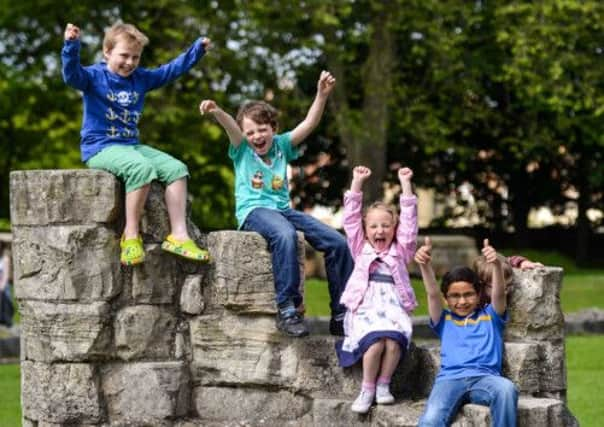Hidden treasures that keep amateurs digging into past


Four years ago, a 50-something man was scouring a fairly ordinary looking field in Staffordshire.
Used to false dawns, Terry Herbert didn’t get too excited when his metal detector first began to beep. As it turned out, the amateur archaeologist had stumbled across the single largest hoard of Anglo-Saxon gold and silver metalwork ever discovered – one which was subsequently valued at £3.5m.
Advertisement
Hide AdAdvertisement
Hide AdIt was, according to one expert, the equivalent of finding the Book of Kells or the Lindisfarne Gospels.
The history of archaeology is littered with important finds made by enthusiastic amateurs and in Yorkshire, where settlements date back thousands of years, even the most cursory of digs can yield an impressive haul.
Take the Middleham Jewel. The late 15th-century pendant was found on a bridle path near Middleham Castle by Ted Seaton, another metal detectorist, back in 1985.
While the blue sapphire stone at its centre measures only a little over one centimetre in length, its value was much greater than its size. Dating from the period of Richard III and made by one of the finest goldsmiths in medieval London, the York Museums Trust had to raise £2.5m to ensure it stayed in the county.
Advertisement
Hide AdAdvertisement
Hide AdWhilst only a minority of amateur archaeologists will find the “big one” the hope that next time they might just unearth an important museum piece is enough to keep them going.
Every weekend thousands of people across the country turn out on their own or in groups to map what lies beneath the land and it’s their efforts which will be celebrated in next month’s Festival of Archaeology. The event will also be a bit of a call to arms to get more people involved and help plug the gap left by recent spending cuts.
English Heritage, which in 2010 received £130m a year from the Government, has seen its funding cut by almost a third over four years and as councils juggle ever diminishing budgets there have been fears that archaeological officers, who ensure vital historical evidence is not lost under new developments, could find themselves a victim of the cuts.
“In the current climate, it is more important than ever that members of the public understand how they can play a vital role in archaeology,” says Mike Heyworth, director of the Council for British Archaeology, the organisation behind the festival. “The CBA was founded in 1944 with the mission of protecting heritage through community activism in the post-war era. Many things have changed since then – and the threats our heritage faces are different – but our mission remains the same.
Advertisement
Hide AdAdvertisement
Hide Ad“Archaeology is key to understanding who we are as humans, where we have come from and where we might be going.
“Traces of that history are around us, dating back almost 800,000 years to the first signs of early humans in the UK. But if that evidence is not properly looked out for, or if its significance is not understood by the public, we risk losing it forever.”
Heyworth says he first got hooked on archaeology when he went on a dig as a 14-year-old and while the golden age of the amateur dig may have been in the 1960s and 70s there have been signs in the last few years that the passion for the past is returning.
“Things are swinging back around again to where local groups will have a much more important role in archaeological work,” he says.
Advertisement
Hide AdAdvertisement
Hide Ad“Three years ago we did a survey of community archaeology that showed there were more than 2,000 local archaeology groups with over 200,000 members. That was more than we realised and we need to capitalise on that.”
As part of this year’s festival, events will be held across Yorkshire from a community dig in North Duffield, near Selby to the reconstruction of an Iron Age charity at the Southburn Archaeological Museum in the east of the county.
“History they say is the biggest leisure participation activity in the UK,” says TV historian Michael Wood. “I am struck everywhere by the huge energy and enthusiasm, deep knowledge and high level of skills – and the staggering amount of fresh insight and new knowledge.
“The festival is designed both to celebrate that passion and Britain’s riches. It gets people out of their armchairs, into the open and experiencing history hands on through archaeology. What better way to understand our relation to it.”
For full details of the event go to www.archaeologyfestival.org.uk.